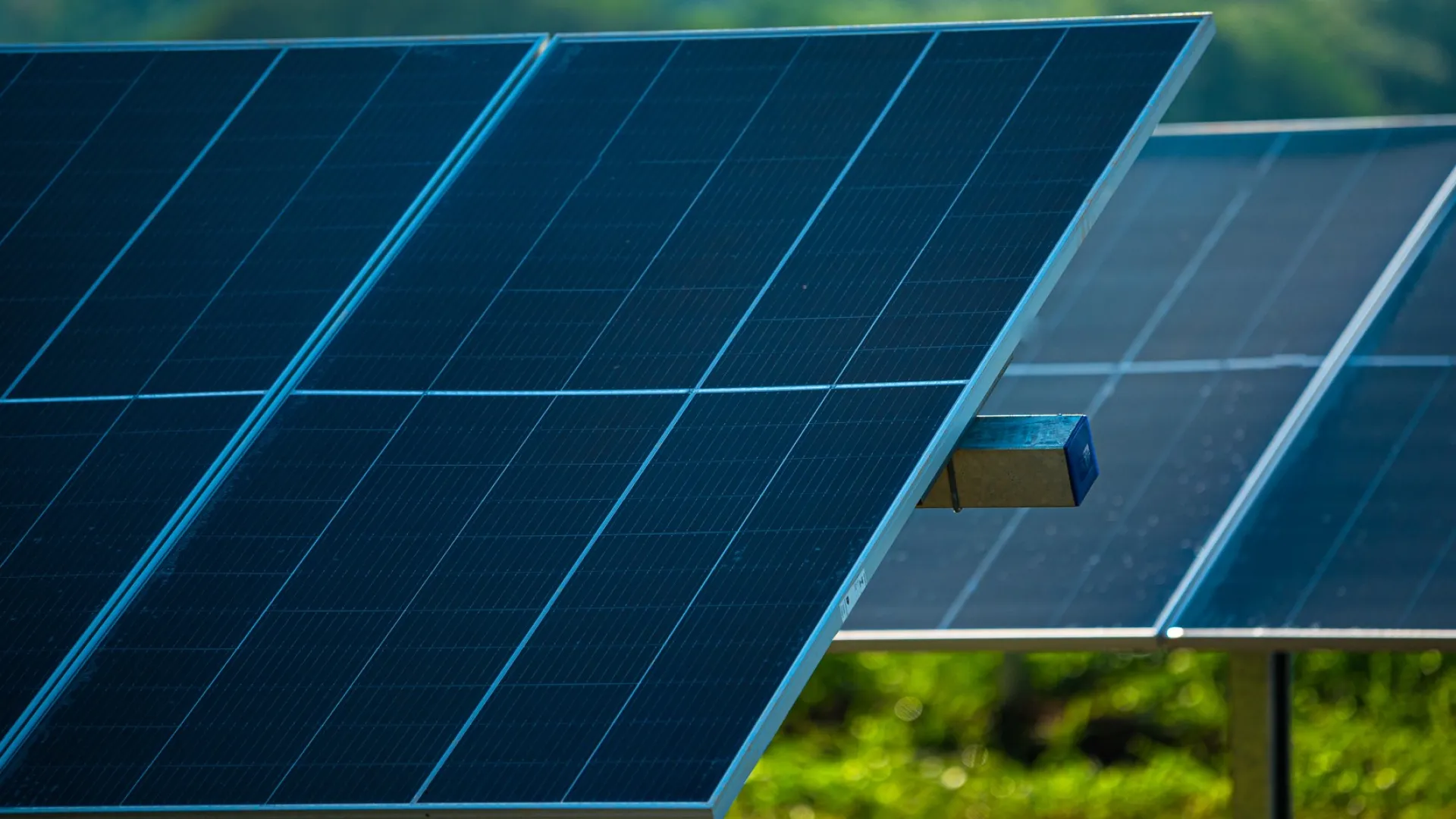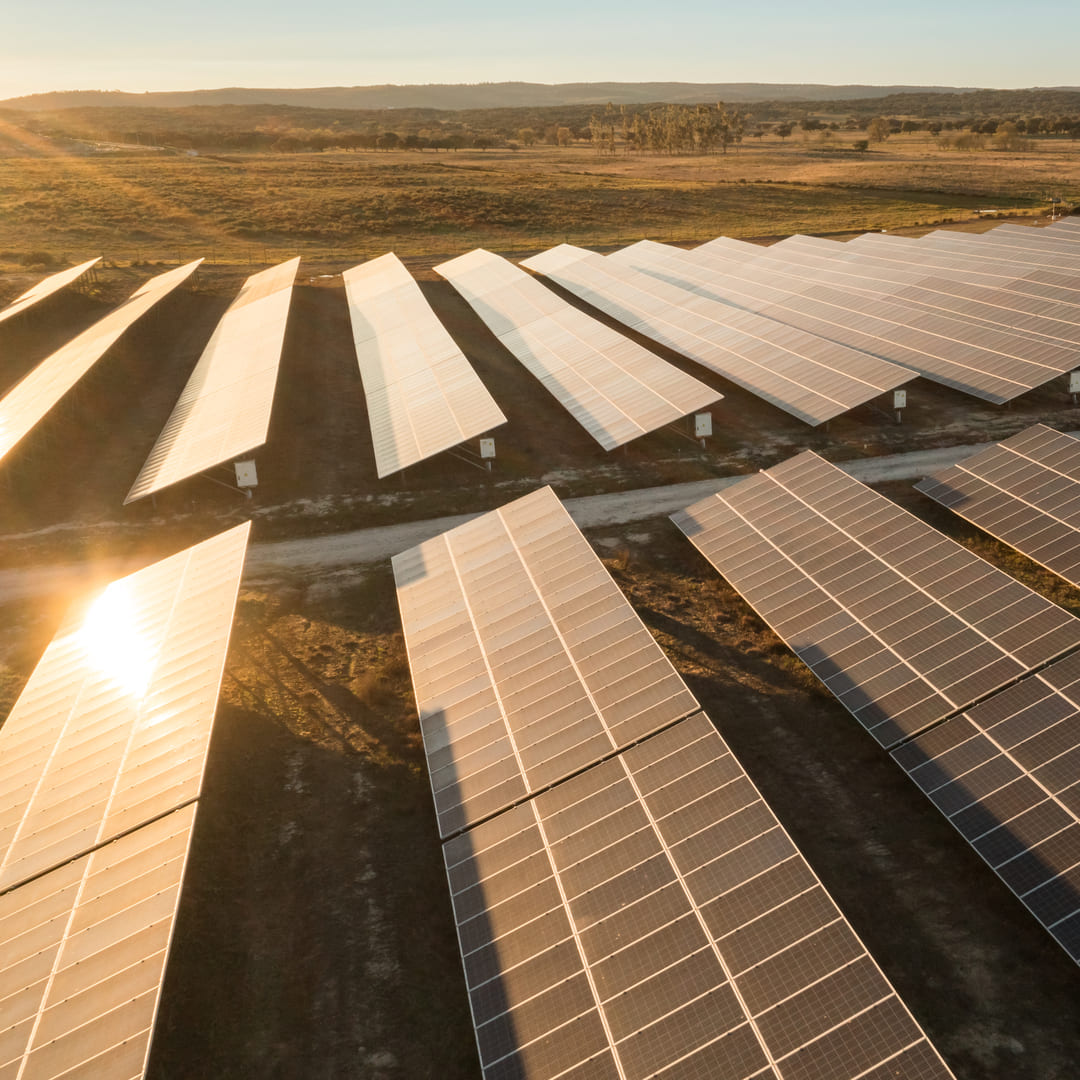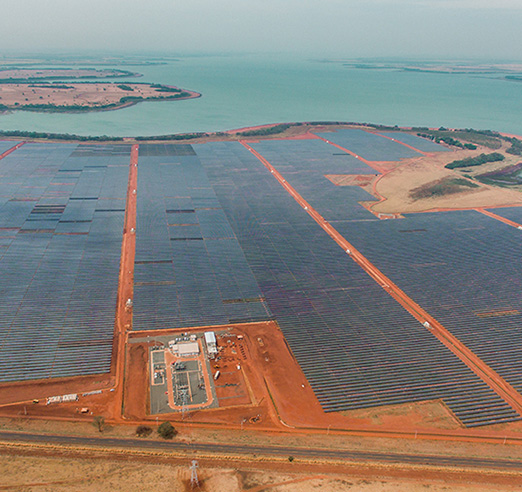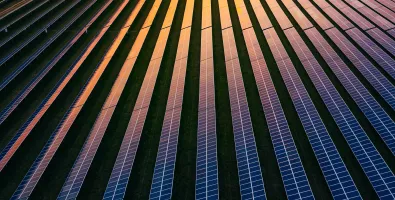
How does solar energy work?
Transforming the sun's energy into electricity to power the world is much easier than you might think. From a small balcony to a vast solar park, it is the fastest-growing energy source. But how does solar energy actually work?
Sunlight is essential to life on Earth, providing energy to all kinds of living beings through its radiation. The direct use of this energy has been happening for millennia, ever since we started reflecting solar rays to light fires. Transforming electromagnetic radiation into electrical energy is something that began to be developed in the last 200 years, with electricity being conducted from a cell exposed to sunlight discovered in 1839 and the first modern solar panel composed of photovoltaic cells created in 1954.
Did you know that
The solar radiation that reaches Earth in just one hour is equivalent to the entire world's energy consumption in a whole year?
Solar energy generation has been growing exponentially in the last decade, thanks to higher production efficiency, reduced manufacturing and equipment assembly costs, and the diversity of locations where panels can be installed. Not to mention the contribution to energy transition and sustainability. Solar energy is the fastest-growing technology, with the International Energy Agency estimating it will represent 80% of all new renewable energy capacity by 2030. And it's not just about large centralized grid distribution projects; 40% of this solar growth is expected in homes, businesses, and communities through distributed solar projects.
How is solar energy produced?
But after all, how does solar energy work and transform sunlight into electricity to power homes, vehicle batteries, businesses, or street lighting? It is a fairly simple, safe process that can be achieved in various locations around the world. And there are several solutions to do it, each with its own particularities, the main one being photovoltaic solar.
Photovoltaic solar is a versatile solar energy production system, based on sets of photovoltaic panels connected to an inverter, from where the electric current goes for immediate consumption or to the distribution network. This design allows a photovoltaic solar project to be scaled to dimensions ranging from a small system on a house roof to a large solar park covering hundreds of hectares.
Each photovoltaic panel is composed of dozens of silicon cells or other semiconductor materials, surrounded by a metal frame coated with glass. When sunlight is absorbed into the panel, it generates an electrical charge that moves the electrons present in the silicon. Then, the electric field of the cells directs the electrons through the circuits of the panel, already in the form of electric current.
The electric current produced in photovoltaic panels is direct current, or DC (English acronym for direct current), being converted through an inverter into alternating current, AC (alternating current), so that it can be used by most equipment or circulate in the distribution network.
The photovoltaic panels are oriented to maximize solar exposure, but they can also be installed on mobile structures or have bifacial technology, which also allows energy capture from the back. They work better on sunny days but can also produce energy when there are clouds and fog; the important thing is that solar radiation reaches the cells. This is the basic principle of any photovoltaic solar system, regardless of its size.
The technology of solar panel cells has been constantly evolving, increasing the efficiency of production, calculated by the percentage of solar rays that, upon reaching the structure, are converted into energy. If until recently 20% efficiency was a good record, there are already panels on the market that exceed 40%.
The versatility of solar panels
Photovoltaic solar energy boasts versatility as one of its main advantages. Such a system can be installed in various ways, with a wide range of production capacities. Centralized solar energy is implemented in large-scale parks, power plants that meet the needs of the electrical distribution grid. On the other hand, distributed solar energy, which includes self-consumption, can be adapted to apartments and houses to reduce energy consumption from the grid, as well as to solar neighborhoods and large companies, always aiming to contribute to energy independence and sustainability.
Did you know
Could the world's largest photovoltaic solar park power Luxembourg?
Other types of solar energy
Besides photovoltaic solar, solar energy can be produced through concentrated solar and solar thermal, a specific bet in several regions of the world.
Concentrated solar uses mirrors to direct the sun's rays to a thermal receiver, which converts the heat into electrical energy. The most common are mirrored panels around a tower that concentrates solar energy, but there are also systems where each plate, with a parabolic shape, has its own receiver. Spain, the United States, and China are the countries that stand out in the production of energy through concentrated solar.
As for solar thermal, its goal is to generate heat, thermal energy, and not electricity. Solar panels of this type heat water, being common in households, but they can also have a much larger scale for use in industries that need heating/hot water. Solar thermal is most used in China, Turkey, Brazil, and India.
Solar inovation is always on the move
A new technology that makes it possible to further exploit the potential of solar energy is the generation of industrial heat. The Rondo Thermal Battery, associated with EDP's solar projects, converts electrical energy into heat, making it possible to decarbonise industries that need thermal energy and usually use coal or gas to get it.
And Évora, in Portugal, is already showing how the future of buildings and historic areas also lies in solar energy. The POCITYF project, coordinated by EDP NEW, uses PV tiles, similar to those used on the oldest roofs in the UNESCO heritage city, to produce electricity without altering the architecture of the buildings. This project paves the way for the application of solar PV in places where the introduction of renewable energies seemed almost impossible, and even serves to better protect them.
Another innovation that is taking its first steps and that will have major implications for the way solar energy works is automation and robotics. EDP NEW and EDP Inovação projects such as TALOS, which uses the SolarCleano robot to clean and maintain solar panels - already used in the Alqueva photovoltaic solar park - and AutoPV, which will test automation in the installation of solar panels at the Peñaflor park in Valladolid, as well as AI4PV, which tests the use of digital twins and artificial intelligence in the management and maintenance of solar parks. Technological innovations that pave the way to speed up PV projects and increase efficiency in electricity production.
Solar energy is on an unstoppable growth trajectory and is the subject of constant development, accelerating sustainability, the energy transition and decarbonisation across the planet. At EDP we are committed to the increase in this renewable energy source, we believe in a green, clean and solar future.








